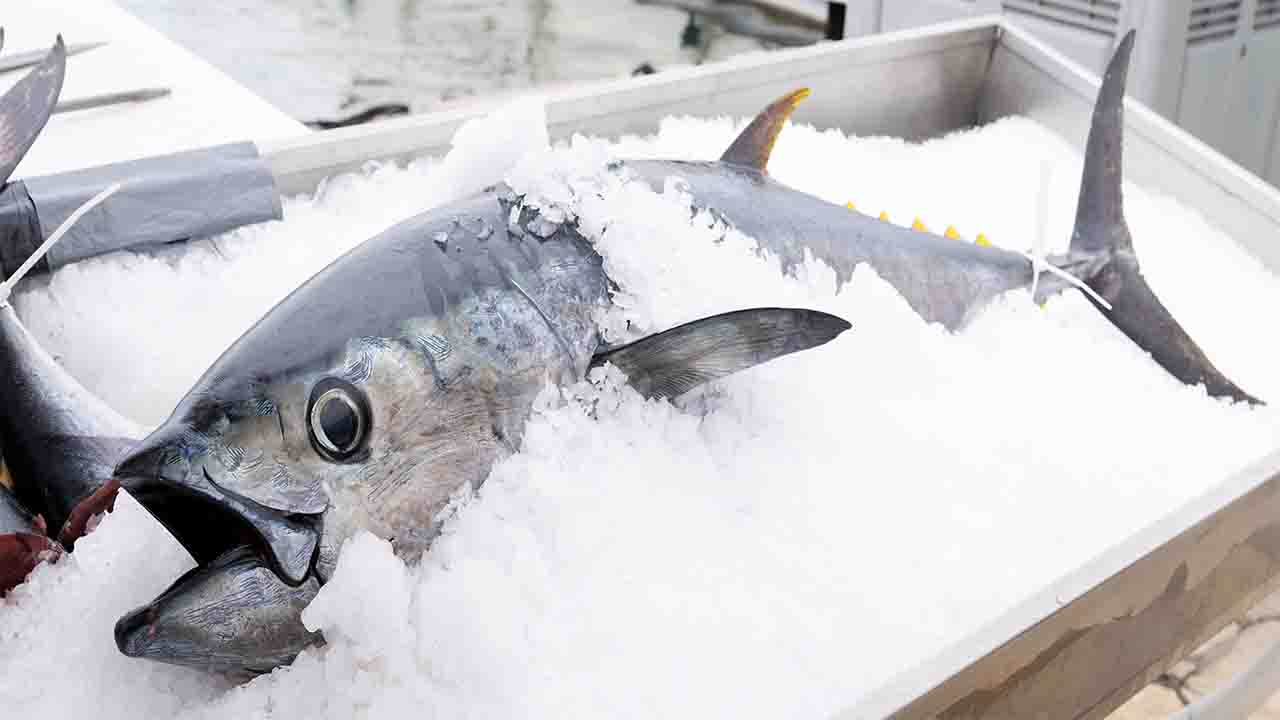The reappearance of bluefin tuna to Northern European waters is a preservation victory story, but increasing sea temperatures in their Mediterranean nursery grounds indicate this retrieval may be short-lived, according to new investigations led by the University of Southampton.
Temperatures in the Mediterranean, within the next 50 years are anticipated to drive juvenile tuna out of the Mediterranean, and may be unintentionally trapped in present sardine and anchovy fisheries – necessitating fishery managers to adjust their approaches to permit tuna nurseries to establish.
Outlining the study, published in Nature, principal author Clive Trueman, Professor of Geochemical Ecology at the University of Southampton, said: We have noticed that anything over 28 degrees Celsius will harmfully impact bluefins’ development. Drawing on accumulations of global climate model forecasts, we demonstrate that most of the Mediterranean Sea will surpass that 28-degree limit within 50 years with the current estimates of climate change, making it too warm for juvenile bluefin. We would, consequently, assume the tuna to transfer their nursery areas, possibly into the Bay of Biscay or other cooler regions – which would place juvenile tuna inside current fisheries for species like anchovy and sardine.
Bluefin reproduce on both sides of the Atlantic Ocean, and fish characteristically return to their nursery area for spawning. Eastern Atlantic bluefin devote their first year in the Mediterranean. When they are roughly one year old and developed enough to control their body temperature, they travel out into the Atlantic, occasionally crossing the Atlantic Ocean looking for small prey fish like sardines, herring and mackerel, reverting to the Mediterranean to spawn.
To determine the cut-off temperature for bluefins to flourish, the international exploration team – which included researchers from eight countries, including the British Antarctic Survey and the AZTI science and technology center in Spain – used a revolutionary method of analyzing a tissue named the otolith. The otolith, originate behind the brains of bony fish, has long been utilize to reveal a fish’s age, but the new study used the chemistry of tuna otoliths to quantity the pace of life of bluefin tuna.
Professor Trueman, who founded the otolith decryption method informed, that all fish have a stony tissue in their ear named an otolith, or ‘ear stone’, enabling them to distinguish noise and to balance. Our new effort uses differences in the levels of natural constant isotopes of carbon and oxygen in the otolith to disclose each tuna’s distinct metabolic rate. This can inform when waters are too hot for the fish to cope, like a natural fitness tracker.
Bluefins are the largest tuna, at up to three meters in length, and one of the fastest, most influential fish in the sea, capable of leaping out of the water at 43 miles per hour. They are also extremely valuable, retailing for thousands of pounds for their meat, a delicacy in sushi and sashimi.








